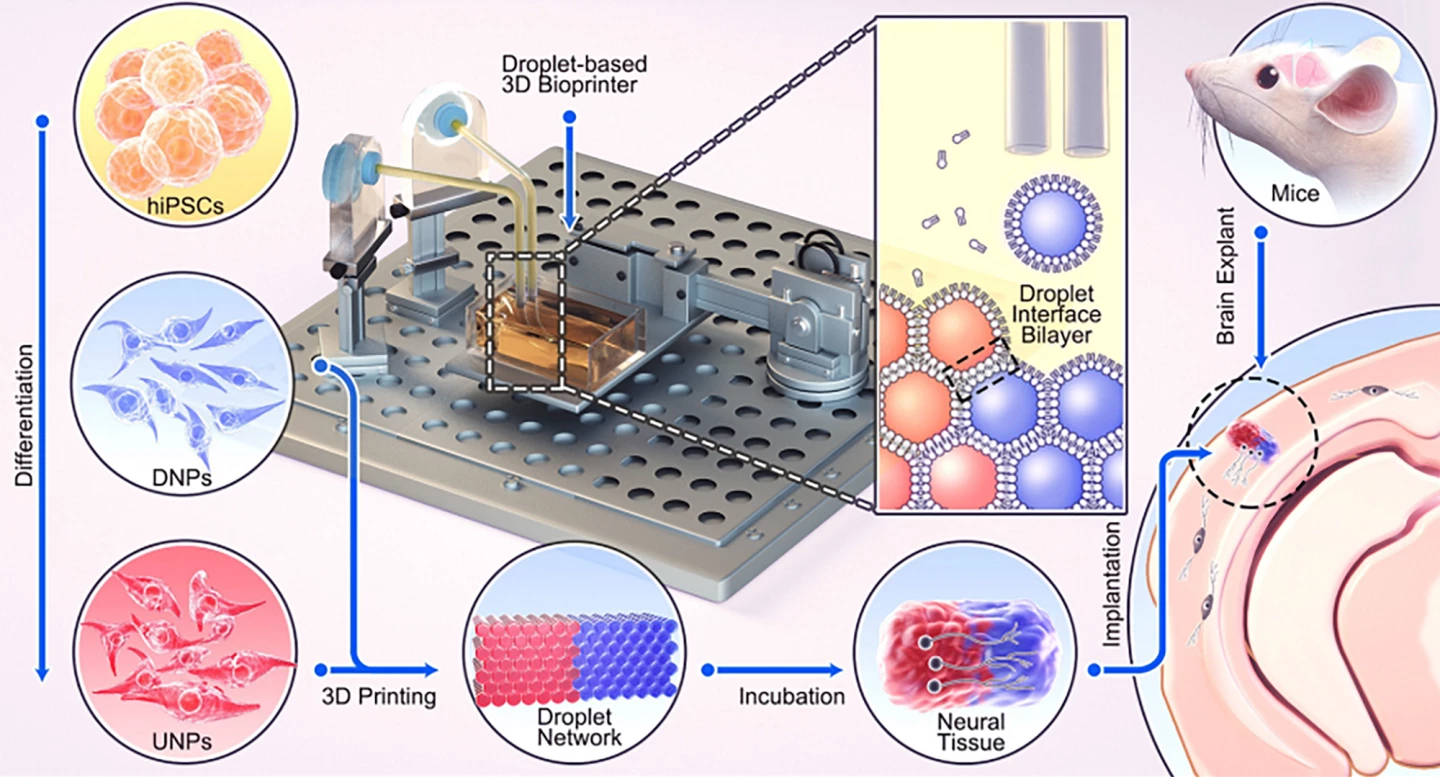Researchers have used human neural stem cells to 3D print functional brain tissue that mimics the architecture of the cerebral cortex, the brain’s outermost layer. The breakthrough technique has the potential to provide individualized repairs to brain injuries.
Our brains have a delicate and complex architecture that can be damaged by trauma, stroke, epilepsy, and tumor-removal surgery, leading to difficulties with communication, movement, and cognition. Implanted stem cells have the potential to regrow damaged brain tissue, but until now, it’s proven difficult to recreate the brain’s architecture using the cells.
In a new study, researchers from the University of Oxford fabricated a two-layered brain tissue by 3D printing human neural stem cells that, when implanted into mouse brain tissue, integrated with it both structurally and functionally.
“Our droplet printing technique provides a means to engineer living 3D tissues with desired architectures, which brings us closer to the creation of personalized implantation treatments for brain injury,” said Linna Zhou, one of the study’s corresponding authors.
Human induced pluripotent stem cells (hiPSCs) have great potential for use in tissue regenerative therapies. They’re artificial stem cells derived from somatic cells that have been genetically reprogrammed to an embryonic-stem-cell-like state, giving them the unique ability to differentiate into any cell type of the body.
In the current study, the researchers first differentiated the hiPSCs into two types of neural progenitor cells designed to form upper and deep layers of the cerebral cortex. These layer-specific progenitors were used to create two bioinks that were printed into layered tissues using 3D droplet printing, a kind of printing that allows the production of scaffold-free soft tissues. The printed progenitor cells were allowed to mature before the layered tissues were implanted into living mouse brain tissue, where their growth and activity were monitored over a week.

The implanted tissues showed strong integration with the mouse brain cells, including the formation of neuronal processes – the finger-like projections that conduct and transmit nerve signals – and the migration of neurons across the boundary between implant and host. The implanted cells also showed signaling activity correlated with the host cells, indicating the cells were communicating with each other and demonstrating functional and structural integration.
“Human brain development is a delicate and elaborate process with a complex choreography,” said Zoltán Molnár, another of the study’s corresponding authors. “It would be naïve to think that we can recreate the entire cellular progression in the laboratory. Nonetheless, our 3D printing project demonstrates substantial progress in controlling the fates and arrangements of human iPSCs to form the basic functional units of the cerebral cortex.”
As the human cerebral cortex has up to six layers of nerve cells, the researchers plan to refine the 3D droplet printing technique to create more complex, multi-layered tissues that more realistically mimic the brain’s architecture. Besides the printed tissue’s potential use in repairing brain injuries, they say it could also be used in drug testing, studies of brain development, and to improve our understanding of cognition.
“This advance marks a significant step towards the fabrication of materials with the full structure and function of natural brain tissues,” said Yongcheng Jin, lead author of the study. “The work will provide a unique opportunity to explore the workings of the human cortex and, in the long term, it will offer hope to individuals who sustain brain injuries.”
The study was published in the journal Nature Communications.
Source: University of Oxford






